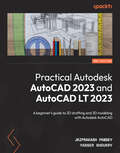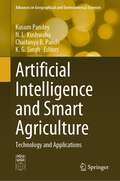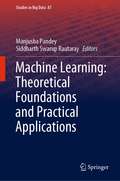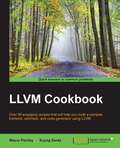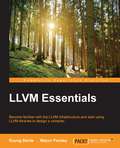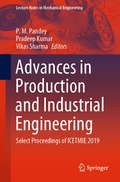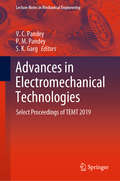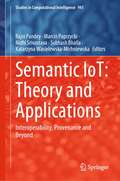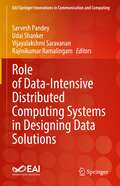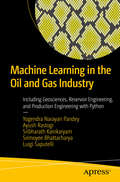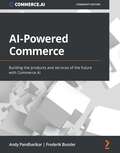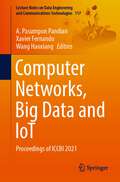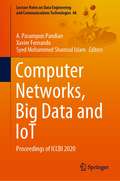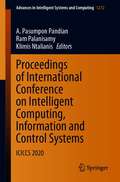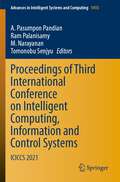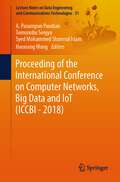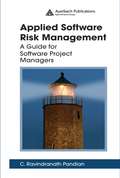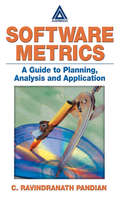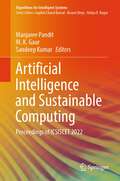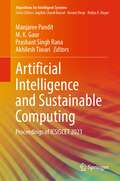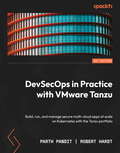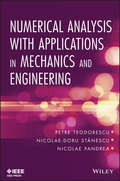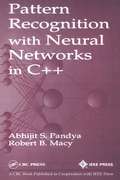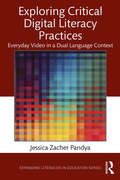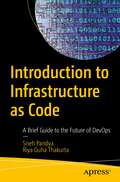- Table View
- List View
Practical Autodesk AutoCAD 2023 and AutoCAD LT 2023: A beginner's guide to 2D drafting and 3D modeling with Autodesk AutoCAD, 2nd Edition
by Jaiprakash Pandey Yasser ShoukryLearn 2D drawing and 3D modeling from scratch using AutoCAD and AutoCAD LT 2023 and become a CAD professionalKey FeaturesLearn techniques for making, modifying, and managing AutoCAD 2D and 3D drawingsUnderstand how to use reusable and named objects like blocks, xRef, and layersScale, annotate, and print drawings from model space and layoutBook DescriptionAutoCAD is one of the most versatile software applications for architectural and engineering designs and the most popular computer-aided design (CAD) platform for 2D drafting and 3D modeling. This hands-on 2nd edition guide will take you through everything you need to know to make the most out of this powerful tool, from a simple tour of the user interface to using advanced tools.Starting with basic drawing shapes and functions, you'll get to grips with the fundamentals of CAD designs. You'll then learn about effective drawing management using layers, dynamic blocks, and groups, and discover how to add annotations and plots like a professional. As you progress, the book will show you how to convert your 2D drawings into 3D models and shapes. You'll also discover advanced features, such as isometric drawings, drawing utilities for managing and recovering complex files, quantity surveying, and multidisciplinary drawing files using xRefs. Finally, you'll focus on rendering and visualizing your designs in AutoCAD.By the end of this book, you'll have developed a solid understanding of CAD principles and be able to work with AutoCAD software confidently to build impressive 2D and 3D creations.What you will learnUnderstand CAD fundamentals like functions, navigation, and componentsCreate complex 3D objects using primitive shapes and editing toolsWork with reusable objects like blocks and collaborate using xRefExplore advanced features like external references and dynamic blocksDiscover surface and mesh modeling tools such as Fillet, Trim, and ExtendUse the paper space layout to create plots for 2D and 3D modelsConvert your 2D drawings into 3D modelsWho this book is forThis 3D modeling book is for design engineers, mechanical engineers, architects, and anyone working in construction, manufacturing, or similar fields. Whether you're an absolute beginner, student, or professional looking to upgrade your engineering design skills, you'll find this AutoCAD book useful. No prior knowledge of CAD or AutoCAD is necessary.
Artificial Intelligence and Smart Agriculture: Technology and Applications (Advances in Geographical and Environmental Sciences)
by Kusum Pandey N. L. Kushwaha Chaitanya B. Pande K. G. SinghAs technology continues to saturate modern society, agriculture has started to adopt digital computing and data-driven innovations. This emergence of “smart” farming has led to various advancements in the field, including autonomous equipment and the collection of climate, livestock, and plant data. As connectivity and data management continue to revolutionize the farming industry, empirical research is required to understand these technological developments. This book explores the applications of various artificial intelligence techniques by identifying and describing technical, functional, and non-functional future technologies for smart farming and agriculture. The book also presents practical application opportunities for the resolution of real-world problems, including contributions from precision irrigation, greenhouse data, livestock monitoring, automation, IoT ecosystems for agriculture, cloud computing, mobile robots for precision agriculture, remote sensing applications, anddata mining. In addition, this book provides summary information about different soilless techniques such as hydroponics, aeroponics, and aquaponics, among others. This book is ideally designed for farmers, agriculturalists, product managers, farm holders, manufacturers, equipment suppliers, industrialists, governmental professionals, researchers, academicians, and students seeking current research on technological applications within agriculture and farming.
Machine Learning: Theoretical Foundations and Practical Applications (Studies in Big Data #87)
by Manjusha Pandey Siddharth Swarup RautarayThis edited book is a collection of chapters invited and presented by experts at 10th industry symposium held during 9–12 January 2020 in conjunction with 16th edition of ICDCIT. The book covers topics, like machine learning and its applications, statistical learning, neural network learning, knowledge acquisition and learning, knowledge intensive learning, machine learning and information retrieval, machine learning for web navigation and mining, learning through mobile data mining, text and multimedia mining through machine learning, distributed and parallel learning algorithms and applications, feature extraction and classification, theories and models for plausible reasoning, computational learning theory, cognitive modelling and hybrid learning algorithms.
LLVM Cookbook
by Mayur Pandey Suyog SardaThe book is for compiler programmers who are familiar with concepts of compilers and want to indulge in understanding, exploring, and using LLVM infrastructure in a meaningful way in their work. This book is also for programmers who are not directly involved in compiler projects but are often involved in development phases where they write thousands of lines of code. With knowledge of how compilers work, they will be able to code in an optimal way and improve performance with clean code.
LLVM Essentials
by Mayur Pandey Suyog SardaBecome familiar with the LLVM infrastructure and start using LLVM libraries to design a compiler About This Book * Learn to use the LLVM libraries to emit intermediate representation (IR) from high-level language * Build your own optimization pass for better code generation * Understand AST generation and use it in a meaningful way Who This Book Is For This book is intended for those who already know some of the concepts of compilers and want to quickly get familiar with the LLVM infrastructure and the rich set of libraries that it provides. What You Will Learn * Get an introduction to LLVM modular design and LLVM tools * Convert frontend code to LLVM IR * Implement advanced LLVM IR paradigms * Understand the LLVM IR Optimization Pass Manager infrastructure and write an optimization pass * Absorb LLVM IR transformations * Understand the steps involved in converting LLVM IR to Selection DAG * Implement a custom target using the LLVM infrastructure * Get a grasp of C's frontend clang, an AST dump, and static analysis In Detail LLVM is currently the point of interest for many firms, and has a very active open source community. It provides us with a compiler infrastructure that can be used to write a compiler for a language. It provides us with a set of reusable libraries that can be used to optimize code, and a target-independent code generator to generate code for different backends. It also provides us with a lot of other utility tools that can be easily integrated into compiler projects. This book details how you can use the LLVM compiler infrastructure libraries effectively, and will enable you to design your own custom compiler with LLVM in a snap. We start with the basics, where you'll get to know all about LLVM. We then cover how you can use LLVM library calls to emit intermediate representation (IR) of simple and complex high-level language paradigms. Moving on, we show you how to implement optimizations at different levels, write an optimization pass, generate code that is independent of a target, and then map the code generated to a backend. The book also walks you through CLANG, IR to IR transformations, advanced IR block transformations, and target machines. By the end of this book, you'll be able to easily utilize the LLVM libraries in your own projects. Style and approach This book deals with topics sequentially, increasing the difficulty level in a step-by-step approach. Each topic is explained with a detailed example, and screenshots are included to help you understand the examples.
Advances in Production and Industrial Engineering: Select Proceedings of ICETMIE 2019 (Lecture Notes in Mechanical Engineering)
by P. M. Pandey Pradeep Kumar Vikas SharmaThis book comprises the select proceedings of the International Conference on Emerging Trends in Mechanical and Industrial Engineering (ICETMIE) 2019. The conference covers current trends in thermal, design, industrial, production and other sub-disciplines of mechanical engineering. This volume focuses on different industrial and production engineering areas such as additive manufacturing, rapid prototyping, computer aided engineering, advanced manufacturing processes, manufacturing management and automation, sustainable manufacturing systems, metrology, manufacturing process optimization, operations research and decision-making models, production planning and inventory control, supply chain management, and quality engineering. The contents of this book will be useful for students, researchers and other professionals interested in industrial and production engineering.
Advances in Electromechanical Technologies: Select Proceedings of TEMT 2019 (Lecture Notes in Mechanical Engineering)
by P. M. Pandey V. C. Pandey S. K. GargThis book comprises select peer-reviewed papers from the International Conference on Emerging Trends in Electromechanical Technologies & Management (TEMT) 2019. The focus is on current research in interdisciplinary areas of mechanical, electrical, electronics and information technologies, and their management from design to market. The book covers a wide range of topics such as computer integrated manufacturing, additive manufacturing, materials science and engineering, simulation and modelling, finite element analysis, operations and supply chain management, decision sciences, business analytics, project management, and sustainable freight transportation. The book will be of interest to researchers and practitioners of various disciplines, in particular mechanical and industrial engineering.
Semantic IoT: Interoperability, Provenance and Beyond (Studies in Computational Intelligence #941)
by Rajiv Pandey Marcin Paprzycki Nidhi Srivastava Subhash Bhalla Katarzyna Wasielewska-MichniewskaThis book is focused on an emerging area, i.e. combination of IoT and semantic technologies, which should enable breaking the silos of local and/or domain-specific IoT deployments. Taking into account the way that IoT ecosystems are realized, several challenges can be identified. Among them of definite importance are (this list is, obviously, not exhaustive): (i) How to provide common representation and/or shared understanding of data that will enable analysis across (systematically growing) ecosystems? (ii) How to build ecosystems based on data flows? (iii) How to track data provenance? (iv) How to ensure/manage trust? (v) How to search for things/data within ecosystems? (vi) How to store data and assure its quality? Semantic technologies are often considered among the possible ways of addressing these (and other, related) questions. More precisely, in academic research and in industrial practice, semantic technologies materialize in the following contexts (this list is, also, not exhaustive, but indicates the breadth of scope of semantic technology usability): (i) representation of artefacts in IoT ecosystems and IoT networks, (ii) providing interoperability between heterogeneous IoT artefacts, (ii) representation of provenance information, enabling provenance tracking, trust establishment, and quality assessment, (iv) semantic search, enabling flexible access to data originating in different places across the ecosystem, (v) flexible storage of heterogeneous data. Finally, Semantic Web, Web of Things, and Linked Open Data are architectural paradigms, with which the aforementioned solutions are to be integrated, to provide production-ready deployments.
Role of Data-Intensive Distributed Computing Systems in Designing Data Solutions (EAI/Springer Innovations in Communication and Computing)
by Sarvesh Pandey Udai Shanker Vijayalakshmi Saravanan Rajinikumar RamalingamThis book discusses the application of data systems and data-driven infrastructure in existing industrial systems in order to optimize workflow, utilize hidden potential, and make existing systems free from vulnerabilities. The book discusses application of data in the health sector, public transportation, the financial institutions, and in battling natural disasters, among others. Topics include real-time applications in the current big data perspective; improving security in IoT devices; data backup techniques for systems; artificial intelligence-based outlier prediction; machine learning in OpenFlow Network; and application of deep learning in blockchain enabled applications. This book is intended for a variety of readers from professional industries, organizations, and students.
Machine Learning in the Oil and Gas Industry: Including Geosciences, Reservoir Engineering, and Production Engineering with Python
by Yogendra Narayan Pandey Ayush Rastogi Sribharath Kainkaryam Srimoyee Bhattacharya Luigi SaputelliApply machine and deep learning to solve some of the challenges in the oil and gas industry. The book begins with a brief discussion of the oil and gas exploration and production life cycle in the context of data flow through the different stages of industry operations. This leads to a survey of some interesting problems, which are good candidates for applying machine and deep learning approaches. The initial chapters provide a primer on the Python programming language used for implementing the algorithms; this is followed by an overview of supervised and unsupervised machine learning concepts. The authors provide industry examples using open source data sets along with practical explanations of the algorithms, without diving too deep into the theoretical aspects of the algorithms employed. Machine Learning in the Oil and Gas Industry covers problems encompassing diverse industry topics, including geophysics (seismic interpretation), geological modeling, reservoir engineering, and production engineering. Throughout the book, the emphasis is on providing a practical approach with step-by-step explanations and code examples for implementing machine and deep learning algorithms for solving real-life problems in the oil and gas industry. What You Will Learn Understanding the end-to-end industry life cycle and flow of data in the industrial operations of the oil and gas industry Get the basic concepts of computer programming and machine and deep learning required for implementing the algorithms used Study interesting industry problems that are good candidates for being solved by machine and deep learning Discover the practical considerations and challenges for executing machine and deep learning projects in the oil and gas industry Who This Book Is For Professionals in the oil and gas industry who can benefit from a practical understanding of the machine and deep learning approach to solving real-life problems.
AI-Powered Commerce: Building the products and services of the future with Commerce.AI
by Andy Pandharikar Frederik BusslerLearn how to use artificial intelligence for product and service innovation, including the diverse use cases of Commerce.AIKey FeaturesLearn how to integrate data and AI in your innovation workflowsUnlock insights into how various industries are using AI for innovationApply your knowledge to real innovation use cases like product strategy and market intelligenceBook DescriptionCommerce.AI is a suite of artificial intelligence (AI) tools, trained on over a trillion data points, to help businesses build next-gen products and services. If you want to be the best business on the block, using AI is a must.Developers and analysts working with AI will be able to put their knowledge to work with this practical guide. You'll begin by learning the core themes of new product and service innovation, including how to identify market opportunities, come up with ideas, and predict trends. With plenty of use cases as reference, you'll learn how to apply AI for innovation, both programmatically and with Commerce.AI. You'll also find out how to analyze product and service data with tools such as GPT-J, Python pandas, Prophet, and TextBlob. As you progress, you'll explore the evolution of commerce in AI, including how top businesses today are using AI. You'll learn how Commerce.AI merges machine learning, product expertise, and big data to help businesses make more accurate decisions. Finally, you'll use the Commerce.AI suite for product ideation and analyzing market trends.By the end of this artificial intelligence book, you'll be able to strategize new product opportunities by using AI, and also have an understanding of how to use Commerce.AI for product ideation, trend analysis, and predictions.What you will learnFind out how machine learning can help you identify new market opportunitiesUnderstand how to use consumer data to create new products and servicesUse state-of-the-art AI frameworks and tools for data analysisLaunch, track, and improve products and services with AIRise above the competition with unparalleled insights from AITurn customer touchpoints into business winsGenerate high-conversion product and service copyWho this book is forThis AI book is for AI developers, data scientists, data product managers, analysts, and consumer insights professionals. The book will guide you through the process of product and service innovation, no matter your pre-existing skillset.
Computer Networks, Big Data and IoT: Proceedings of ICCBI 2021 (Lecture Notes on Data Engineering and Communications Technologies #117)
by A. Pasumpon Pandian Xavier Fernando Wang HaoxiangThis book presents best selected research papers presented at the International Conference on Computer Networks, Big Data and IoT (ICCBI 2021), organized by Vaigai College Engineering, Madurai, Tamil Nadu, India, during December 9–10, 2021. The book covers original papers on computer networks, network protocols and wireless networks, data communication technologies and network security. The book is a valuable resource and reference for researchers, instructors, students, scientists, engineers, managers and industry practitioners in those important areas.
Computer Networks, Big Data and IoT: Proceedings of ICCBI 2020 (Lecture Notes on Data Engineering and Communications Technologies #66)
by A. Pasumpon Pandian Xavier Fernando Syed Mohammed Shamsul IslamThis book presents best selected research papers presented at the International Conference on Computer Networks, Big Data and IoT (ICCBI 2020), organized by Vaigai College Engineering, Madurai, Tamil Nadu, India, during 15–16 December 2020. The book covers original papers on computer networks, network protocols and wireless networks, data communication technologies and network security. The book is a valuable resource and reference for researchers, instructors, students, scientists, engineers, managers and industry practitioners in those important areas.
Proceedings of International Conference on Intelligent Computing, Information and Control Systems: ICICCS 2020 (Advances in Intelligent Systems and Computing #1272)
by A. Pasumpon Pandian Ram Palanisamy Klimis NtalianisThis book is a collection of papers presented at the International Conference on Intelligent Computing, Information and Control Systems (ICICCS 2020). It encompasses various research works that help to develop and advance the next-generation intelligent computing and control systems. The book integrates the computational intelligence and intelligent control systems to provide a powerful methodology for a wide range of data analytics issues in industries and societal applications. The book also presents the new algorithms and methodologies for promoting advances in common intelligent computing and control methodologies including evolutionary computation, artificial life, virtual infrastructures, fuzzy logic, artificial immune systems, neural networks and various neuro-hybrid methodologies. This book is pragmatic for researchers, academicians and students dealing with mathematically intransigent problems.
Proceedings of Third International Conference on Intelligent Computing, Information and Control Systems: ICICCS 2021 (Advances in Intelligent Systems and Computing #1415)
by A. Pasumpon Pandian Tomonobu Senjyu Ram Palanisamy M. NarayananThis book is a collection of papers presented at the International Conference on Intelligent Computing, Information and Control Systems (ICICCS 2021). It encompasses various research works that help to develop and advance the next-generation intelligent computing and control systems. The book integrates the computational intelligence and intelligent control systems to provide a powerful methodology for a wide range of data analytics issues in industries and societal applications. The book also presents the new algorithms and methodologies for promoting advances in common intelligent computing and control methodologies including evolutionary computation, artificial life, virtual infrastructures, fuzzy logic, artificial immune systems, neural networks and various neuro-hybrid methodologies. This book is pragmatic for researchers, academicians and students dealing with mathematically intransigent problems.
Proceeding of the International Conference on Computer Networks, Big Data and IoT (Lecture Notes on Data Engineering and Communications Technologies #31)
by A. Pasumpon Pandian Tomonobu Senjyu Syed Mohammed Shamsul Islam Haoxiang WangThis book presents the proceedings of the International Conference on Computer Networks, Big Data and IoT (ICCBI-2018), held on December 19–20, 2018 in Madurai, India.In recent years, advances in information and communication technologies [ICT] have collectively aimed to streamline the evolution of internet applications. In this context, increasing the ubiquity of emerging internet applications with an enhanced capability to communicate in a distributed environment has become a major need for existing networking models and applications. To achieve this, Internet of Things [IoT] models have been developed to facilitate a smart interconnection and information exchange among modern objects – which plays an essential role in every aspect of our lives. Due to their pervasive nature, computer networks and IoT can easily connect and engage effectively with their network users. This vast network continuously generates data from heterogeneous devices, creating a need to utilize big data, which provides new and unprecedented opportunities to process these huge volumes of data. This International Conference on Computer Networks, Big Data, and Internet of Things [ICCBI] brings together state-of-the-art research work, which briefly describes advanced IoT applications in the era of big data. As such, it offers valuable insights for researchers and scientists involved in developing next-generation, big-data-driven IoT applications to address the real-world challenges in building a smartly connected environment.
Applied Software Risk Management: A Guide for Software Project Managers
by C. Ravindranath PandianFew software projects are completed on time, on budget, and to their original specifications. Focusing on what practitioners need to know about risk in the pursuit of delivering software projects, Applied Software Risk Management: A Guide for Software Project Managers covers key components of the risk management process and the software development
Software Metrics: A Guide to Planning, Analysis, and Application
by C. Ravindranath PandianThe modern field of software metrics emerged from the computer modeling and "statistical thinking" services of the 1980s. As the field evolved, metrics programs were integrated with project management, and metrics grew to be a major tool in the managerial decision-making process of software companies. This book simplifies software measurement and explains its value as a tool for decision-makers at software companies. Techniques presented in Software Metrics: A Guide to Planning, Analysis, and Application are derived from best practices. The ideas are field-proven, down-to-earth, and straightforward, making it an invaluable resource for those striving for process improvement. This overview helps readers enrich their knowledge of measurements, analysis, and best practices, and demonstrates how ordinary analysis techniques can be applied to achieve extraordinary results. Easy-to-understand tools and techniques show how metrics create models that are indispensable to decision-making in the software industry.
Artificial Intelligence and Sustainable Computing: Proceedings of ICSISCET 2022 (Algorithms for Intelligent Systems)
by Manjaree Pandit M. K. Gaur Sandeep KumarThis book presents high-quality research papers presented at 4th International Conference on Sustainable and Innovative Solutions for Current Challenges in Engineering and Technology (ICSISCET 2022) held at Madhav Institute of Technology & Science (MITS), Gwalior, India, from November 19 to 20, 2022. The book extensively covers recent research in artificial intelligence (AI) that knit together nature-inspired algorithms, evolutionary computing, fuzzy systems, computational intelligence, machine learning, deep learning, etc., which is very useful while dealing with real problems due to their model-free structure, learning ability, and flexible approach. These techniques mimic human thinking and decision-making abilities to produce systems that are intelligent, efficient, cost-effective, and fast. The book provides a friendly and informative treatment of the topics which makes this book an ideal reference for both beginners and experienced researchers.
Artificial Intelligence and Sustainable Computing: Proceedings of ICSISCET 2021 (Algorithms for Intelligent Systems)
by Manjaree Pandit M. K. Gaur Prashant Singh Rana Akhilesh TiwariThis book presents high-quality research papers presented at 3rd International Conference on Sustainable and Innovative Solutions for Current Challenges in Engineering and Technology (ICSISCET 2021) held at Madhav Institute of Technology & Science (MITS), Gwalior, India, from November 13–14, 2021. The book extensively covers recent research in artificial intelligence (AI) that knits together nature-inspired algorithms, evolutionary computing, fuzzy systems, computational intelligence, machine learning, deep learning, etc., which is very useful while dealing with real problems due to their model-free structure, learning ability, and flexible approach. These techniques mimic human thinking and decision-making abilities to produce systems that are intelligent, efficient, cost-effective, and fast. The book provides a friendly and informative treatment of the topics which makes this book an ideal reference for both beginners and experienced researchers.
DevSecOps in Practice with VMware Tanzu: Build, run, and manage secure multi-cloud apps at scale on Kubernetes with the Tanzu portfolio
by Parth Pandit Robert HardtModernize your apps, run them in containers on Kubernetes, and understand the business value and the nitty-gritty of the VMware Tanzu portfolio with hands-on instructionsPurchase of the print or kindle book includes a free eBook in the PDF formatKey FeaturesGain insights into the key features and capabilities of distinct VMWare Tanzu productsLearn how and when to use the different Tanzu products for common day-1 and day-2 operationsModernize applications deployed on multi-cloud platforms using DevSecOps best practicesBook DescriptionAs Kubernetes (or K8s) becomes more prolific, managing large clusters at scale in a multi-cloud environment becomes more challenging – especially from a developer productivity and operational efficiency point of view. DevSecOps in Practice with VMware Tanzu addresses these challenges by automating the delivery of containerized workloads and controlling multi-cloud Kubernetes operations using Tanzu tools.This comprehensive guide begins with an overview of the VMWare Tanzu platform and discusses its tools for building useful and secure applications using the App Accelerator, Build Service, Catalog service, and API portal. Next, you'll delve into running those applications efficiently at scale with Tanzu Kubernetes Grid and Tanzu Application Platform. As you advance, you'll find out how to manage these applications, and control, observe, and connect them using Tanzu Mission Control, Tanzu Observability, and Tanzu Service Mesh. Finally, you'll explore the architecture, capabilities, features, installation, configuration, implementation, and benefits of these services with the help of examples.By the end of this VMware book, you'll have gained a thorough understanding of the VMWare Tanzu platform and be able to efficiently articulate and solve real-world business problems.What you will learnBuild apps to run as containers using predefined templatesGenerate secure container images from application source codeBuild secure open source backend services container imagesDeploy and manage a Kubernetes-based private container registryManage a multi-cloud deployable Kubernetes platformDefine a secure path to production for Kubernetes-based applicationsStreamline multi-cloud Kubernetes operations and observabilityConnect containerized apps securely using service meshWho this book is forThis book is for cloud platform engineers and DevOps engineers who want to learn about the operations of tools under the VMware Tanzu umbrella. The book also serves as a useful reference for application developers and solutions architects as well as IT leaders who want to understand how business and security outcomes can be achieved using the tools covered in this book. Prior knowledge of containers and Kubernetes will help you get the most out of this book.
Numerical Analysis with Applications in Mechanics and Engineering
by Nicolae Pandrea Petre Teodorescu Nicolae-Doru StanescuA much-needed guide on how to use numerical methods to solve practical engineering problems Bridging the gap between mathematics and engineering, Numerical Analysis with Applications in Mechanics and Engineering arms readers with powerful tools for solving real-world problems in mechanics, physics, and civil and mechanical engineering. <P><P>Unlike most books on numerical analysis, this outstanding work links theory and application, explains the mathematics in simple engineering terms, and clearly demonstrates how to use numerical methods to obtain solutions and interpret results. Each chapter is devoted to a unique analytical methodology, including a detailed theoretical presentation and emphasis on practical computation. Ample numerical examples and applications round out the discussion, illustrating how to work out specific problems of mechanics, physics, or engineering. Readers will learn the core purpose of each technique, develop hands-on problem-solving skills, and get a complete picture of the studied phenomenon. Coverage includes: How to deal with errors in numerical analysis Approaches for solving problems in linear and nonlinear systems Methods of interpolation and approximation of functions Formulas and calculations for numerical differentiation and integration Integration of ordinary and partial differential equations Optimization methods and solutions for programming problems Numerical Analysis with Applications in Mechanics and Engineering is a one-of-a-kind guide for engineers using mathematical models and methods, as well as for physicists and mathematicians interested in engineering problems.
Pattern Recognition with Neural Networks in C++
by Abhijit S. Pandya Robert B. MacyThe addition of artificial neural network computing to traditional pattern recognition has given rise to a new, different, and more powerful methodology that is presented in this interesting book. This is a practical guide to the application of artificial neural networks. Geared toward the practitioner, Pattern Recognition with Neural Networks in C++ covers pattern classification and neural network approaches within the same framework. Through the book's presentation of underlying theory and numerous practical examples, readers gain an understanding that will allow them to make judicious design choices rendering neural application predictable and effective. The book provides an intuitive explanation of each method for each network paradigm. This discussion is supported by a rigorous mathematical approach where necessary. C++ has emerged as a rich and descriptive means by which concepts, models, or algorithms can be precisely described. For many of the neural network models discussed, C++ programs are presented for the actual implementation. Pictorial diagrams and in-depth discussions explain each topic. Necessary derivative steps for the mathematical models are included so that readers can incorporate new ideas into their programs as the field advances with new developments. For each approach, the authors clearly state the known theoretical results, the known tendencies of the approach, and their recommendations for getting the best results from the method. The material covered in the book is accessible to working engineers with little or no explicit background in neural networks. However, the material is presented in sufficient depth so that those with prior knowledge will find this book beneficial. Pattern Recognition with Neural Networks in C++ is also suitable for courses in neural networks at an advanced undergraduate or graduate level. This book is valuable for academic as well as practical research.
Exploring Critical Digital Literacy Practices: Everyday Video in a Dual Language Context (Expanding Literacies in Education)
by Jessica Zacher PandyaIn this book, Jessica Zacher Pandya examines the everyday videomaking practices of students in a dual language, under-resourced school in order to explore the ways children interrogate their worlds, the kinds of identities they craft, and the language and literacy learning practices that emerge from digital video production. Focusing on vulnerable populations who are often left out of innovative in- and out-of-school digital media projects—including English language learners, immigrants, and children with special needs—this book offers an expanded understanding of children’s critical digital literacy practices, and shows how videomaking in the regular curriculum affords opportunities for redistributive social justice. Weaving together pedagogical, methodological, social, and political concerns into her examination of a real-world context, Pandya offers a practical and informative analysis of making videos in schools; examines the impact of videomaking on students’ language use and agency; and adds significantly to current theorizations of digital and new literacies.
Introduction to Infrastructure as Code: A Brief Guide to the Future of DevOps
by Sneh Pandya Riya Guha ThakurtaGet inspired to explore the depths of the DevOps field. In today’s rapidly transforming world, Infrastructure as Code (IaC) has emerged as an effective approach to maintain, scale, and deploy software systems. This book offers a mixture of foundational IaC concepts and practical examples to give you hands-on experience.You will first gain an understanding of DevOps culture as well as how to adapt to IaC. Introduction to Infrastructure as Code begins by reviewing the innovative features that DevOps in general, and IaC in particular, have to offer for adoption and growth for different verticals. With this solid base established, you will then learn the importance, processes, and outcome of building infrastructure solutions.Authors Sneh Pandya and Riya Guha Thakurta then provide hands-on examples utilizing IaC platforms, open source tools, and essential considerations such as security, scalability, and deployments. Each chapter focuses on one vertical (i.e., foundations, architecture patterns, securing infrastructure, preparing for deployment), how it impacts the DevOps toolchain in a holistic manner, and how it can be used to build solutions specific to that vertical, with a detailed walkthrough of code, environments, and other tools. After completing this book, you’ll have launched your own infrastructure solution through an open source stack consisting of platforms and tools such as Terraform, Chef, and Puppet.What You Will LearnUnderstand the fundamentals of DevOps and Infrastructure as CodePrepare for the ever-evolving ecosystem of modular infrastructure and the needs of the futureAvoid potential pitfalls and breakdowns while working with infrastructureBuild scalable and efficient IaC solutions that work at a small, medium, and large scale in a real-life environmentUnderstand and be responsibly aware of security concerns related to the domain, and how to address themWho Is This Book ForBeginners interested in building a career in DevOps as well as professionals looking to gain expertise and advance their career with greater knowledge of IaC. including Technical Product Managers, and Architects.
